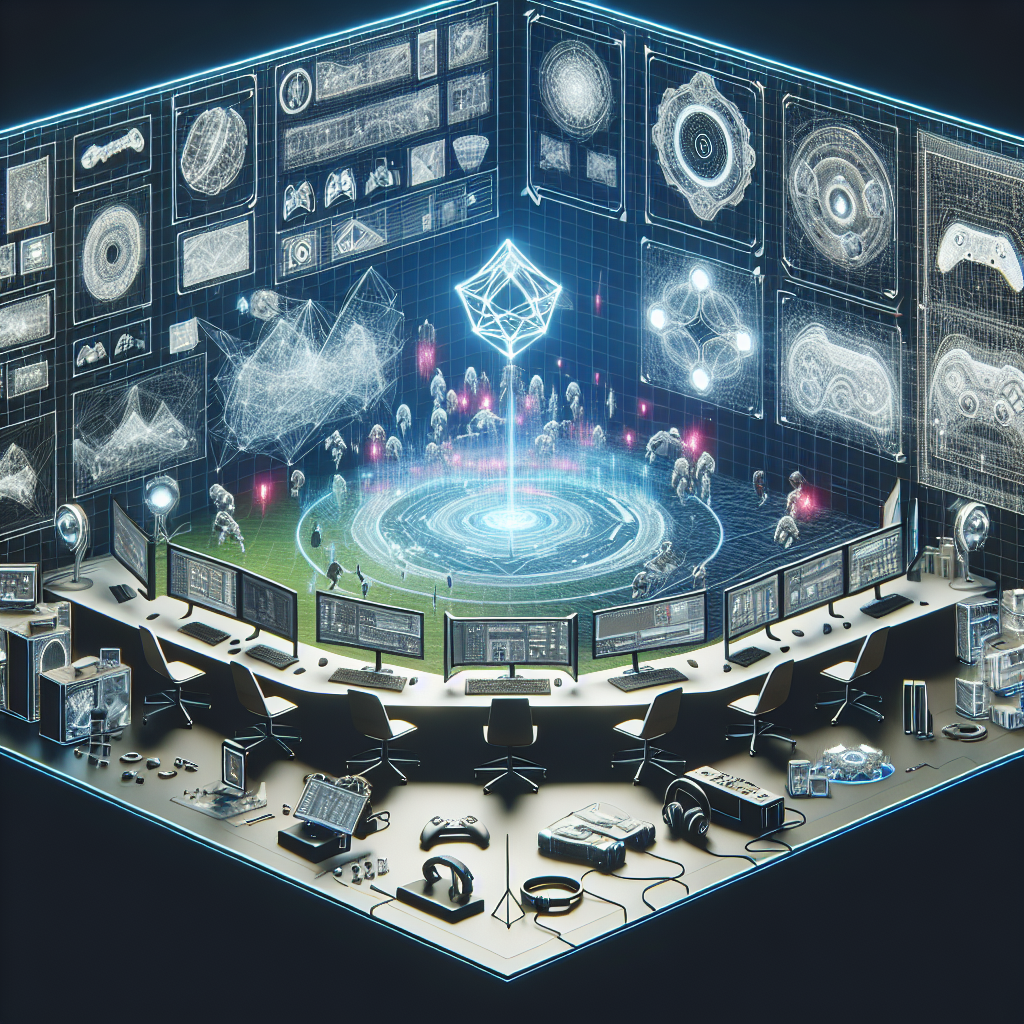AI-Powered Game Design Tools and Resources
In recent years, the gaming industry has seen a significant rise in the use of artificial intelligence (AI) to enhance game design and development processes. AI-powered game design tools and resources have revolutionized the way games are created, making the process faster, more efficient, and ultimately, more enjoyable for both developers and players.
AI-powered game design tools utilize machine learning algorithms to analyze and process vast amounts of data in order to assist game developers in various aspects of game design, such as level creation, character design, game balancing, and more. These tools are able to generate content, provide insights, and automate tedious tasks, ultimately freeing up developers to focus on more creative aspects of game design.
One of the key benefits of AI-powered game design tools is their ability to generate content quickly and efficiently. For example, tools like Artbreeder use AI algorithms to generate unique and realistic character designs by combining various elements such as facial features, hairstyles, and clothing options. This can save developers hours of time that would have otherwise been spent manually creating and tweaking character designs.
Additionally, AI-powered game design tools can help with level design by providing suggestions for layout, enemy placement, and difficulty balancing. Tools like LudiQ use machine learning algorithms to analyze player behavior and preferences in order to create levels that are challenging yet enjoyable. This can help developers create a more engaging gaming experience for players and increase player retention.
Furthermore, AI-powered game design tools can assist with game balancing by analyzing player feedback and data to identify areas of the game that may need adjustment. This can help developers fine-tune the difficulty level, pacing, and mechanics of the game to ensure a more enjoyable and fair gaming experience for players.
Overall, AI-powered game design tools and resources have the potential to revolutionize the gaming industry by streamlining the game design process, improving the quality of games, and ultimately, enhancing the overall gaming experience for players.
FAQs
Q: How do AI-powered game design tools work?
A: AI-powered game design tools utilize machine learning algorithms to analyze and process vast amounts of data in order to assist game developers in various aspects of game design. These tools are able to generate content, provide insights, and automate tedious tasks, ultimately freeing up developers to focus on more creative aspects of game design.
Q: What are some examples of AI-powered game design tools?
A: Some examples of AI-powered game design tools include Artbreeder, which uses AI algorithms to generate unique character designs, and LudiQ, which uses machine learning algorithms to assist with level design and game balancing.
Q: How can AI-powered game design tools benefit game developers?
A: AI-powered game design tools can benefit game developers by saving time and effort in content creation, providing insights and suggestions for level design and game balancing, and ultimately, improving the overall quality of games.
Q: Are AI-powered game design tools accessible to indie developers?
A: Yes, many AI-powered game design tools are accessible to indie developers, with some tools offering free or affordable pricing options. These tools can help indie developers create high-quality games with limited resources.
Q: What is the future of AI-powered game design tools?
A: The future of AI-powered game design tools looks promising, with continued advancements in AI technology leading to more sophisticated tools that can assist with all aspects of game design. These tools have the potential to revolutionize the gaming industry and create new possibilities for game developers and players alike.

